Profile

Ethel Tobach
Birth:
1921
Death:
2015
Training Location(s):
PhD, New York University (1957)
MA, New York University (1952)
BA, Hunter College (1949)
Primary Affiliation(s):
The Graduate School, City University of New York (1989-2015)
American Museum of Natural History (1957-2015)
U.S. Public Health Research Institute of New York (1953-1956)
Psychology’s Feminist Voices Oral History Interview:
Other Media:
Biographies on the Web
Ethel Tobach in Jewish Women: A Comprehensive Historical Encyclopedia
Archival Collection
Career Focus:
Comparative psychology and ethology; biopsychology of social behavior; genes and gender; peace psychology; combating racism and sexism in psychology; social justice.
Biography
Ethel Tobach's story is a remarkable one. Her strength, courage and determination to make Psychology a more socially aware and socially responsible discipline truly stand out in the field.
Tobach was born in Miaskovka, Ukraine on November 7th 1921 to Jewish parents. Shortly after her birth, the pogroms of the White Army during the Russian revolution forced her parents to flee to Palestine. When she was only nine months old, her father passed away and her mother immigrated with her to the United States. They began this new chapter of their lives in Philadelphia, but moved to Brooklyn when Tobach was 10 years old.
Tobach's encounter with Psychology began at New York City's Hunter College in 1937. Unsure of her career path, she majored in English, economics, business economics, pre-med and educational psychology. Her focus later shifted from educational psychology to comparative psychology. Her expressed interest in psychology was met with opposition by some of her professors. She was told that there were no women in her field, to which she replied, "I don't care about that." She brought her interests to eminent comparative psychologist T.C Schneirla, who was working at the American Museum of Natural History in New York. Almost as a challenge to her to prove her worth, he encouraged her to take at least one class with him at New York University in comparative psychology. Tobach got an A as her final grade and secured a job with Schneirla at the Museum, where she eventually spent her entire career.
While Tobach trained at the Museum, she took her PhD at New York University. The program Director, social psychologist Stuart E. Cook, was hesitant to accept her. He expressed concern that married women often got their PhDs but never returned to work in the field because they became occupied with children and family. In her innocence (i.e., instead of recognizing this as a form of sex discrimination), Tobach argued that her husband was very understanding and supportive and wanted her to succeed. Fortunately, she convinced Cook and was accepted. Her dissertation paper on emotional behavior in mice was eventually published in a book on social behavior. Tobach regards her major contribution to the field of comparative psychology as showing that there is a relationship between stress and disease in rats and by demonstrating that newborn rats were able to smell at birth.
Although Tobach found a scientific career in comparative psychology, from an early age she had a deep interest in issues of race, gender, and class, and in combating social injustice. Her mother and father were Socialist (Labor) Zionists. Although her mother was never actively involved in formal feminist organizations, she was a labor activist and instilled in Tobach that as a woman she could do anything she wanted to: "My mother raised me in a very left orientation. Very early I went to a Yiddish school which was not religious, it was a secular school.... We were very labor-organized and left-organized. And so I always grew up with things that my mother acted and said...first of all, you were very concerned about people who were poor and who didn't have the same possibilities that you had.... And that there were all kinds of different people that you should be friendly with. And that Labor was an important thing; that you had to support Labor."
As Tobach entered her early twenties during WWII, she began working at a factory making lenses for bombsights and became active in the trade union. Although a pacifist, her outrage at Nazi atrocities impelled her to join the Women's Army Corps. After basic training in Georgia she was stationed in a psychiatric hospital on Long Island. With the U.S. bombing of Hiroshima and Nagasaki in 1945, Tobach recognized the viciousness of U.S. policy and has since worked tirelessly as a peace activist.
Tobach spent her career as a researcher and curator at the American Museum of Natural History. In addition to her research on animal behavior, she was professionally active in many groups. In 1972 she became the Vice President of the New York Academy of Sciences. Twelve years later, she became President of the Division of Comparative and Physiological Psychology of the American Psychological Association (APA). She has also been an active member of the New York Association for Women in Science, the Association for Women in Psychology, Psychologists for Social Action, and CLUE - a group of women in trade unions. In 1978, together with Betty Rosoff, Tobach initiated a series of books called the Genes and Gender series in which authors wrote scientific critiques and reviews to oppose the use of genetic determinism in the service of racism and sexism.
In 1993 Tobach received the Kurt Lewin award from the Society for the Psychological Study of Social Issues, the Society's highest honor. In 2004, she served as president of APA's Division 48 - the Division of Peace Psychology. In 2003, she won the Gold Medal award for Lifetime Achievement in Psychology in the Public Interest from the APA. Tobach passed away in Massachusetts in August, 2015. Dubbed a "woman of chutzpah," an "indefatigable intellectual" and a "passionate political nudge" by her friend and colleague Michelle Fine, Tobach nudged others to do what she always did: fight relentlessly for a more socially responsible psychology and a more just society.
by Rokisha Lewis (2010); updated by A. Rutherford (2015)
To cite this article, see Credits
Selected Works
By Ethel Tobach
Tobach, E., & Reed, R. (2003). Understanding rape. In C. B. Travis (Ed.), Evolution, gender, and rape (pp. 105-138). Cambridge, MA: The MIT Press.
Tobach, E., & Rosoff, B. (Eds.) (1994). Challenging racism & sexism: Alternatives to genetic explanations, Genes & Gender VII. New York: The Feminist Press.
Tobach, E. (1992). Personal is political. Journal of Social Issues, 50, 221-244.
Tobach, E. (1986). Evolutionary theories and the issues of nuclear war: Implications for mental health. International Journal of Mental Health,15(1), 56-64.
Tobach, E., & Rosoff, B. (Eds.) (1980). Genes & gender III. New York: Gordian Press.
Tobach, E., & Rosoff, B. (Eds.) (1978). Genes & gender. New York: Gordian Press.
Tobach, E. & Proshansky, H. M. (Eds.) (1976). Genetic destiny, social controversy, and social conflict . New York: AMS Press.
Tobach, E. (1976). Evolution of behavior and the comparative method. International Journal of Psychology, 11, 185-201.
Tobach, E. (Ed.) (1973). The four horsemen: Racism, sexism, militarism and social Darwinism. New York: Behavioral Publications.
Tobach, E. (1971). Some evolutionary aspects of human gender. Journal of Orthopsychiatry, 41, 710-715.
About Ethel Tobach
Gold Medal Award (2003). Ethel Tobach. American Psychologist, 58, 551-553.
Greenberg, Gary. (2015). Ethel Tobach, November 7, 1921 – August 15, 2015. International Journal of Comparative Psychology,28.
McKay, S.A., Roe, M. D, & Wessells, M. G. (2008). Pioneers in U. S. peace psychology: Ethel Tobach. Peace and Conflict, 14, 1-14.
Miller, D. (2008). A warm toast to a dear friend. Peace and Conflict: Journal of Peace Psychology, 14, 23-24.
Rutherford, A., Vaughn-Blount, K., & Ball, L.C. (2010). Responsible opposition, disruptive voices: Science, activism, and the history of feminist psychology. Psychology of Women Quarterly, 34, 160-173.
Schwebel, M. (2008). Ethel Tobach: Well-integrated psychologist. Peace and Conflict: Journal of Peace Psychology, 14, 25-28.
Photo Gallery
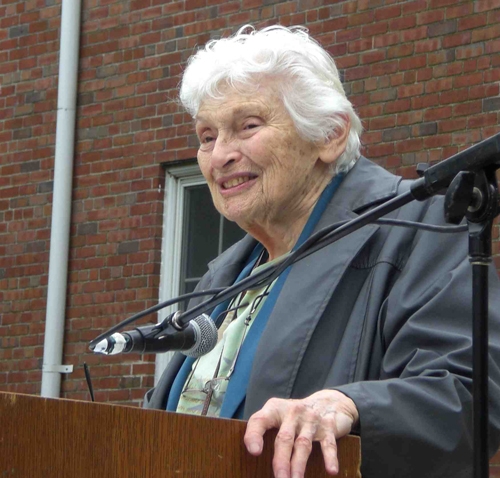
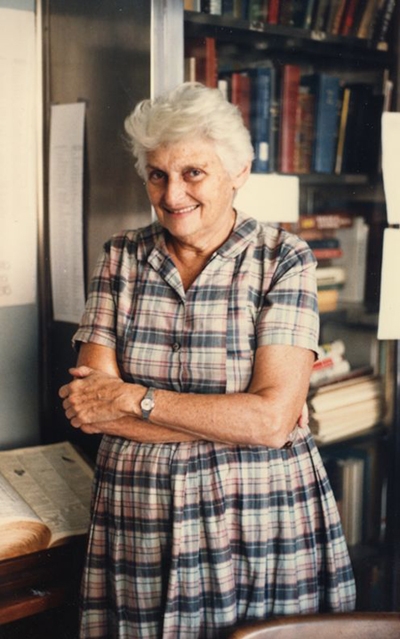

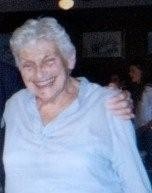
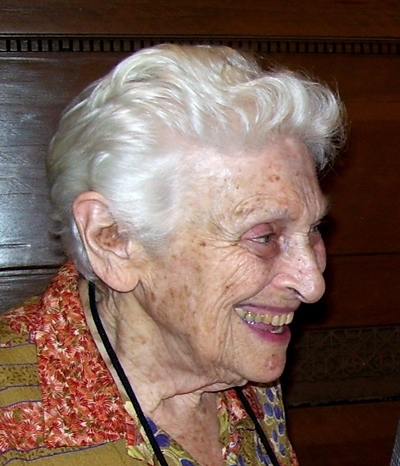
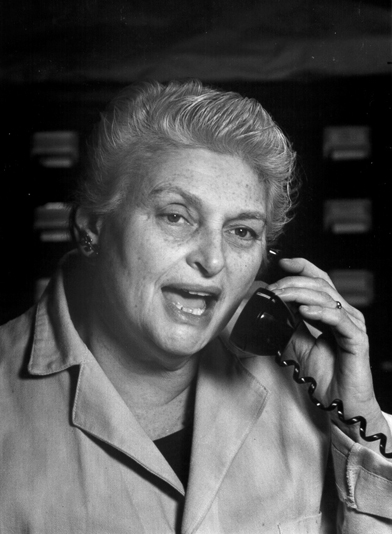


Ethel Tobach
Birth:
1921
Death:
2015
Training Location(s):
PhD, New York University (1957)
MA, New York University (1952)
BA, Hunter College (1949)
Primary Affiliation(s):
The Graduate School, City University of New York (1989-2015)
American Museum of Natural History (1957-2015)
U.S. Public Health Research Institute of New York (1953-1956)
Psychology’s Feminist Voices Oral History Interview:
Other Media:
Biographies on the Web
Ethel Tobach in Jewish Women: A Comprehensive Historical Encyclopedia
Archival Collection
Career Focus:
Comparative psychology and ethology; biopsychology of social behavior; genes and gender; peace psychology; combating racism and sexism in psychology; social justice.
Biography
Ethel Tobach's story is a remarkable one. Her strength, courage and determination to make Psychology a more socially aware and socially responsible discipline truly stand out in the field.
Tobach was born in Miaskovka, Ukraine on November 7th 1921 to Jewish parents. Shortly after her birth, the pogroms of the White Army during the Russian revolution forced her parents to flee to Palestine. When she was only nine months old, her father passed away and her mother immigrated with her to the United States. They began this new chapter of their lives in Philadelphia, but moved to Brooklyn when Tobach was 10 years old.
Tobach's encounter with Psychology began at New York City's Hunter College in 1937. Unsure of her career path, she majored in English, economics, business economics, pre-med and educational psychology. Her focus later shifted from educational psychology to comparative psychology. Her expressed interest in psychology was met with opposition by some of her professors. She was told that there were no women in her field, to which she replied, "I don't care about that." She brought her interests to eminent comparative psychologist T.C Schneirla, who was working at the American Museum of Natural History in New York. Almost as a challenge to her to prove her worth, he encouraged her to take at least one class with him at New York University in comparative psychology. Tobach got an A as her final grade and secured a job with Schneirla at the Museum, where she eventually spent her entire career.
While Tobach trained at the Museum, she took her PhD at New York University. The program Director, social psychologist Stuart E. Cook, was hesitant to accept her. He expressed concern that married women often got their PhDs but never returned to work in the field because they became occupied with children and family. In her innocence (i.e., instead of recognizing this as a form of sex discrimination), Tobach argued that her husband was very understanding and supportive and wanted her to succeed. Fortunately, she convinced Cook and was accepted. Her dissertation paper on emotional behavior in mice was eventually published in a book on social behavior. Tobach regards her major contribution to the field of comparative psychology as showing that there is a relationship between stress and disease in rats and by demonstrating that newborn rats were able to smell at birth.
Although Tobach found a scientific career in comparative psychology, from an early age she had a deep interest in issues of race, gender, and class, and in combating social injustice. Her mother and father were Socialist (Labor) Zionists. Although her mother was never actively involved in formal feminist organizations, she was a labor activist and instilled in Tobach that as a woman she could do anything she wanted to: "My mother raised me in a very left orientation. Very early I went to a Yiddish school which was not religious, it was a secular school.... We were very labor-organized and left-organized. And so I always grew up with things that my mother acted and said...first of all, you were very concerned about people who were poor and who didn't have the same possibilities that you had.... And that there were all kinds of different people that you should be friendly with. And that Labor was an important thing; that you had to support Labor."
As Tobach entered her early twenties during WWII, she began working at a factory making lenses for bombsights and became active in the trade union. Although a pacifist, her outrage at Nazi atrocities impelled her to join the Women's Army Corps. After basic training in Georgia she was stationed in a psychiatric hospital on Long Island. With the U.S. bombing of Hiroshima and Nagasaki in 1945, Tobach recognized the viciousness of U.S. policy and has since worked tirelessly as a peace activist.
Tobach spent her career as a researcher and curator at the American Museum of Natural History. In addition to her research on animal behavior, she was professionally active in many groups. In 1972 she became the Vice President of the New York Academy of Sciences. Twelve years later, she became President of the Division of Comparative and Physiological Psychology of the American Psychological Association (APA). She has also been an active member of the New York Association for Women in Science, the Association for Women in Psychology, Psychologists for Social Action, and CLUE - a group of women in trade unions. In 1978, together with Betty Rosoff, Tobach initiated a series of books called the Genes and Gender series in which authors wrote scientific critiques and reviews to oppose the use of genetic determinism in the service of racism and sexism.
In 1993 Tobach received the Kurt Lewin award from the Society for the Psychological Study of Social Issues, the Society's highest honor. In 2004, she served as president of APA's Division 48 - the Division of Peace Psychology. In 2003, she won the Gold Medal award for Lifetime Achievement in Psychology in the Public Interest from the APA. Tobach passed away in Massachusetts in August, 2015. Dubbed a "woman of chutzpah," an "indefatigable intellectual" and a "passionate political nudge" by her friend and colleague Michelle Fine, Tobach nudged others to do what she always did: fight relentlessly for a more socially responsible psychology and a more just society.
by Rokisha Lewis (2010); updated by A. Rutherford (2015)
To cite this article, see Credits
Selected Works
By Ethel Tobach
Tobach, E., & Reed, R. (2003). Understanding rape. In C. B. Travis (Ed.), Evolution, gender, and rape (pp. 105-138). Cambridge, MA: The MIT Press.
Tobach, E., & Rosoff, B. (Eds.) (1994). Challenging racism & sexism: Alternatives to genetic explanations, Genes & Gender VII. New York: The Feminist Press.
Tobach, E. (1992). Personal is political. Journal of Social Issues, 50, 221-244.
Tobach, E. (1986). Evolutionary theories and the issues of nuclear war: Implications for mental health. International Journal of Mental Health,15(1), 56-64.
Tobach, E., & Rosoff, B. (Eds.) (1980). Genes & gender III. New York: Gordian Press.
Tobach, E., & Rosoff, B. (Eds.) (1978). Genes & gender. New York: Gordian Press.
Tobach, E. & Proshansky, H. M. (Eds.) (1976). Genetic destiny, social controversy, and social conflict . New York: AMS Press.
Tobach, E. (1976). Evolution of behavior and the comparative method. International Journal of Psychology, 11, 185-201.
Tobach, E. (Ed.) (1973). The four horsemen: Racism, sexism, militarism and social Darwinism. New York: Behavioral Publications.
Tobach, E. (1971). Some evolutionary aspects of human gender. Journal of Orthopsychiatry, 41, 710-715.
About Ethel Tobach
Gold Medal Award (2003). Ethel Tobach. American Psychologist, 58, 551-553.
Greenberg, Gary. (2015). Ethel Tobach, November 7, 1921 – August 15, 2015. International Journal of Comparative Psychology,28.
McKay, S.A., Roe, M. D, & Wessells, M. G. (2008). Pioneers in U. S. peace psychology: Ethel Tobach. Peace and Conflict, 14, 1-14.
Miller, D. (2008). A warm toast to a dear friend. Peace and Conflict: Journal of Peace Psychology, 14, 23-24.
Rutherford, A., Vaughn-Blount, K., & Ball, L.C. (2010). Responsible opposition, disruptive voices: Science, activism, and the history of feminist psychology. Psychology of Women Quarterly, 34, 160-173.
Schwebel, M. (2008). Ethel Tobach: Well-integrated psychologist. Peace and Conflict: Journal of Peace Psychology, 14, 25-28.







